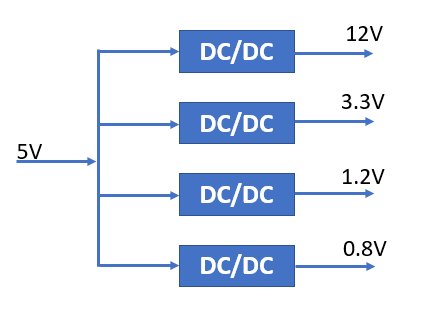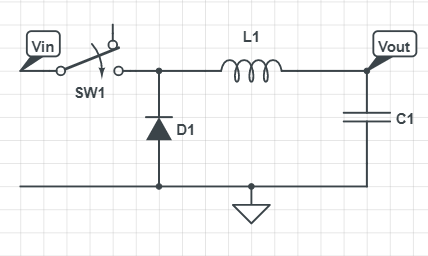What is DC-DC Converter?
11/05/2019, hardwarebee
As the name suggests, a DC to DC Converter is meant to convert one DC voltage into another DC voltage. They are used to increase or decrease the voltage level. DC to DC converters are based on an electronic circuit that uses electronic switching technology. A DC to DC converter can support both very low voltage and high voltage applications and most likely to be used in applications where a linear regulator is not an optimum solution.
DC to DC converters are mostly used in order to produce voltage that is regulated and consistent, arising from a source that is fluctuating or is not constant. These converters use high frequency switching circuit, together with inductors, switches, and capacitors in order to reduce the switching noise and maintaining regulated DC voltage. Even in the case that the input or output voltage may vary, DC to DC converters ensure a constant output in terms of the voltage thanks to closed feedback loops, thus maintaining its efficiency as a power conversion circuit.
As of today, there are numerous varieties and kinds of DC to DC converters available in the market. Let’s take a deeper dive into how DC to DC converters came about, how they operate, and where they are applied generally:
DC to DC Converters Purpose
There are many electrical devices and circuits across a variety of applications that require a lower or higher voltage than provided by the power source. In such cases, we require a circuit to transforming or change the level of the electrical voltage input received.
Before the invention of DC to DC converters, the use of vibrators, rectifiers, and transformers- step up or step down- had become common. And while they worked, they were highly inefficient and wasted a lot of energy in the form of excess heat.
The Need of DC to DC Converters
DC to DC converters allow for the transformation of electrical voltage in an extremely efficient manner, making them ideal for use in devices such as mobile phones and laptops. Mobile phones and laptops tend to use switch mode converters. Let’s take the example of a similar portable device that uses rechargeable batteries as its power source. Why does it need a DC to DC Converter to function?
Think about the various components that make up your device and how each of those components will require a different amount of current and voltage in order to function optimally. The screen display will not be using supply voltage as the CPU of the device. As such, you need a converter that can either step up or step down the voltage level as needed for the various voltage domains required by the product.
DC to DC converters and generally much more efficient and smaller than linear regulators. Their disadvantages are price, noise and design complexity.
Types of DC to DC Converters
There are many different types of DC to DC converters depending on the application they can be used for. Four of the main kinds include: buck converter, boost converter, buck boost converter, and SEPIC converter. Let’s look at each of these different types of converters and how they operate:
Buck Converter
Buck converter is a DC to DC converter that is producing a voltage that has been stepped down (reduced) from the input voltage. As such, you can use it to power a lower voltage devices from a higher voltage source.
Boost Converter
A boost converter, on the other hand, steps the voltage up as suggested by its name and thus produces a higher output voltage as opposed to the lower input voltage. It is generally used in the likes of LED lights that extract power from a Lithium cell. Read more about voltage booster.
Buck Boost Converter
A buck boost converter is a dual-purpose DC to DC converter – it can either step up or step down the voltage in order to produce an output that may be higher or lower than the input. It can also be used to produce either negative or positive voltages and thus, is used in a variety of places.
SEPIC Converter
SEPIC converters work in a similar fashion to the buck boost converter as it is also a step up as well as a step down converter. It does, however, have some benefits over the traditional buck-boost converter which is why it may be preferred in certain situations.
Isolated DC to DC Converter
The above-mentioned types of converters and non-isolated DC to DC converters. A DC to DC converter with isolation will typically feature an isolation transformer present between the input and output stages. This tends to be especially useful when the input voltage level and the output voltage level are largely different from each other.















